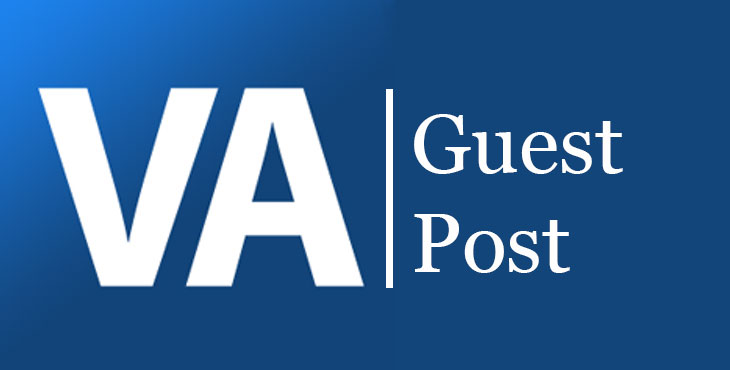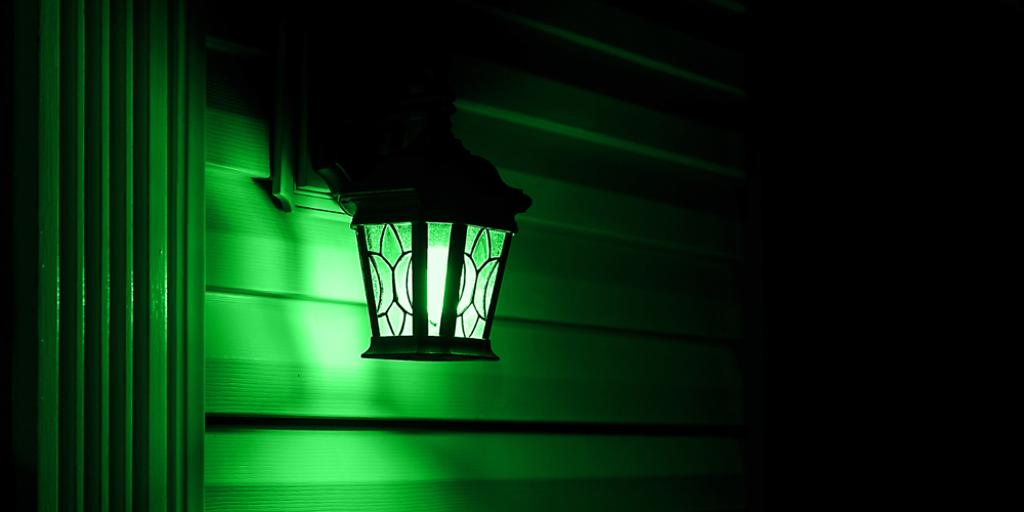(Note: Cross-posted at IAVA’s blog.)
VA has made significant improvements to its social media presence and utilization in the last few years. Up until a year ago key social media positions did not even exist, including the role of the Director of New Media. These hires are a huge step forward. With thousands of new veterans coming home in the coming years, the social media team has the potential to be a pivotal force in transforming VA culture and the way the agency serves our community.
However, VA still has a long way to go when it comes to the adoption and optimization of social media. Although VA now runs dozens of Twitter feeds and Facebook pages, something young veterans expect at a minimum from a responsive organization of any kind, VA’s overall outreach to new veterans continues to lag. If we assume, as we must, that all veterans want access to the healthcare, benefits and other incentives they have earned, then well-funded and executed VA outreach and education programs are absolutely critical. If these are as visible as VA has argued, then why are only 50 percent of Iraq and Afghanistan vets utilizing VA healthcare today? Either these veterans don’t want the benefits, don’t know about them or can’t get to them.
At IAVA, our members consistently tell us it is a combination of the latter: they don’t have the information they need to access VA benefits. In a recent poll of IAVA members, 61.3 percent said they had never seen a VA public service announcement-a key platform (social media and otherwise) for any organization to promote information. I think we can all agree that every single Iraq and Afghanistan veteran deserves better than that.
To the point of comparing VA’s social media presence to IAVA’s, this is like comparing apples to oranges. VA is a government agency with a budget in excess of $100 billion that serves 20 million veterans nationwide. By contrast, we are a small nonprofit with a $5 million budget focused on supporting just over 2 million veterans. With an audience that is a multiple of 10, we would expect VA to have a significantly larger presence than IAVA.
We’re ready to work with VA on real transformative change. Yet, for almost two years, VA has been unresponsive to our monthly requests to meet with Secretary Shinseki. In 2010, IAVA didn’t have a single opportunity to meet with the Secretary-despite being the largest organization for veterans of the current wars. As veterans, we all play for the same team. IAVA and VA are equally committed to serving this generation of veterans and their families in the best way possible. We can only achieve that goal if we work constructively and collaboratively.
Paul Rieckhoff 
Topics in this story
More Stories
From Nov. 4 to 11, buildings and homes across the country will light up green to recognize the sacrifice and strength of our Veterans as they transition from military to civilian life.
Summer can be a joyful time of year, but some outdoor activities can be hard for some Veterans. In this guest post, former VA Secretary Bob McDonald shares resources and plans to navigate summer activities.
"A CAPITOL FOURTH" airs on PBS Thursday, July 4, 2024 from 8:00 to 9:30 p.m. E.T.







Most people are starting to realize that social media is not just a fad, that it is important and that its here to stay.
Social media has become so important that Google has begun using social media when configuring its search engine results.
That tells me a lot.
No question that IAVA rules when it comes to social media, Paul. You guys were way ahead of the curve.
It might be that the relative size of the VA makes it lag, in spite of the fact that Veteran Services Officers in the field do recognize that young vets turn to social media for information. Sometimes smaller is better. A organization IAVA’s size can be more facile and quick to respond, which is not meant to diminish the phenomenal job IAVA has done connecting vets to a network and advocating for them.
As for PSA’s, many organizations that serve veterans may have them, but lack the budget to buy air time. The National Veterans Foundation, for example, has a series of PSA’s that we make available, but we can’t control when, or even whether, they’re shown.
For veterans trying to access information on benefits and healthcare, sometimes it’s a case of not knowing where to start, and sometimes it’s a case of the system seeming too impersonal, too difficult to understand. I call it VA-speak. There’s so much language there that it’s daunting trying to get an answer to a specific question. It’s like calling in to your bank/cable provider/public utility and getting mired in endless menu options when you just want a human to talk to.
The NVF’s toll-free crisis hotline, manned by vets, helps callers navigate the resources that are available to them. In addition, our website features a weekly blog from a VSO with years of experience connecting vets with the benefits they’ve earned.
It’s all about communication and education. You’re so right that we all play for the same team. If you have an idea that we can collaborate on, we’re eager to hear about it.
Cathie Smith, Communications
National Veterans Foundation
http://www.nvf.org
888.777.4443
For some reason I think it goes higher than Shinseki.When you criticize an administration as IAVA has or the controling leaders of Congress. They are not just going to drop everything and sit down with you. It makes perfect sense to me what is going on this type of thing it is so typical DC that it stinks. Look at it another way, those who criticized the Bush Administration were’nt favored for meetings. It is a schoolyard ploy for the Obama Administration to keep those who are critical of it out of the loop. In Democracy we know Majority Rules, in the game of the VA they worry of no one other than the Legion and VFW. IAVA’s membership size in comparison is 5%. The more vets that sign up, makes our voice become louder.IAVA is leading the way with innovation and technology.
Mr. Rieckhoff is probably one of the greatest social entreprenuers of the OIF/OEF generation. People like him take risks. IAVA in four years has done more than many other VSO’s in 10. IAVA is also not falling inline with the VA’s good ole boy ways. IAVA does’nt harass legislators for the same things that the VA wants. IAVA does it for what our generation of veterans want.
Finally the VA has no right to criticize a Veteran Service Organization of any kind.The VA doesn’t work for the VA it works for the veterans. Any organized group of veterans have a voice at the table. Seems to me that IAVA is taking the high road after the Director of New Media punched below the belt. Funny thing is that IAVA only hires the best and brightest there is more IVY crawling out of IAVA’s employee pool than probably the VA system in its entirety.
For the record I am not a member of IAVA nor work for them. I do not support them due to their support for the repeal of Dont ask Don’t tell and their position on resettling Iraqis in the United States.
T
“IAVA in four years has done more than many other VSO’s in 10”
Bill,
Could you provide a name of a veteran who IAVA has helped navigate through the VA (other than their paid employees, who always seem to be the poster child of who IAVA is helping)? Thanks for your time
Maybe there’s a reason why most vets join the Legion or VFW, because they can get help from other veterans there.
I’m not trying to crush the spirit of IAVA, it would just be nice if they had a focus of helping veterans instead of just giving them something to complain about to legislators.
Bill you did work for IAVA till 2008. Bill served in Paul’s unit in Iraq.
IAVA & WWP are basically organizations that claim to represent and have the best intentions towards vets, but after six years of believing in the spew I have seen otherwise. Look at the balance sheet they turn in (990s). Follow the money and watch where IAVA and WWP ends up in the evenings and who with.
Stick with the old orgs… these new kids on the block want a piece of the political action that ensures a stream of cash in the form of donations, media exposure for future political runs, and rubbing elbows with the high profile Washington and media personalities.
I wonder why the Secretary won’t meet with IAVA. Has he something to hide? Is he afraid IAVA won’t listen? I wonder why. I would like the Secretary to do more. What does he do daily? Does he actually do something like going to VA facilities? How about he comes to the Dayton, Ohio hospital to see what’s going on with the issues there( dental tools not being sterilized, veterans with mental health issues being turned away). As the Secretary of the VA, he sets the standard, and must set an example to follow to be a good leader. He has to change the VA otherwise an entire generation of veterans will end up like the Vietnam veterans. And that is NOT acceptable.
V/r
Jeff K.
Each service member who is leaving the service is provided with mandatory pre-separation counseling by a either contractor with ACAP, or a social worker with the Fleet and Family Service, Airman & Family Readiness Center. At that counseling they are given the next VA briefing. This briefing is not mandatory. If they attend it they are given a 4 hour briefing where the VA rep covers the VA in detail. The service members often at the second or third break will leave and miss the areas that are all important. Who is to blame for this? IAVA stills say that the VA isn’t doing much to educate the OEF/OIF veterans. How can they blame the Department who provide very detail informational briefing. The simple fix would be to require DOD to make the VA briefings mandatory prior to separating or clearing the base. NO EXCUSE.
As far about the OUTREACH that the VA does or doesn’t do. I have been employed with the Department for 15 yrs and the last 13 yrs that is all I have done. I have held various position within the VA. Each Regional Office has Homeless, Woman,Elderly, FPOW, Minority Outreach Coordinator’s. There job is to go out into the community to provide detail VA briefings at the State Fairs, Homeless Stand-down, Jails’, etc. Even the VA Medical Center and Vet Center has employees that also go into the community to provide information briefings.
Even when the VA did a mass phone call outreach to the OEF/OIF Veterans most of them didn’t want to be bothered with the calls. If we called them more than 3 times they felt it was harassment. Each VAMC tries to hold focus groups for OEF/OIF Veterans, they refuse to be part of open communication with hospital management.
So the ole adage that you can lead a horse to water but you can’t make it drink applies here.
In his comment, KM says:
“As for outreach, at least while I’ve been at VA, it really hasn’t been in the DNA of senior managers. They grew up in a VA where outreach was not real important and even today is probably not a critical element in their performance plan. It magically comes, as Gerry McGovern might say, out of an *outreach factory*. But this is changing… some.”
Actually, it is a critical element in the VA’s “performance plan” (or whatever name it goes by).
On his first full day in office (1/21/09), the President signed the “Transparent and Open Government Memorandum” telling federal agencies that he wanted them to be more “transparent, participatory, and collaborative”. (Basically, he was saying that he wanted them to “do better outreach”). See the link at the center of this webpage:
http://www.whitehouse.gov/open
The following December (ten months later), the White House (via OMB) directed each federal agency to come up with its own “Open Government Plan”. One element of the Plan was supposed to be a description of the “measures” that the VA would use to see if it was making any progress in “transparency, participation, and collaboration” (aka, “public outreach”).
So the question is this: Does the VA’s “OpenGov” Plan describe the ways that it will measure progress (i.e., in public outreach)?
According to the VA’s “Self-Assessment” (look for it at http://www.va.gov/open), their answer is “No (but we will someday).”
Go to the last page, and find the next-to-last Item:
http://www.va.gov/OPEN/docs/opengov_evaluationapril30.pdf
Even though the VA is getting lots of Facebook “friends”, and is offering prizes for innovative ideas, they still have NOT decided on what to measure to see if they are making progress in the “OpenGov” Mission.
So, until the VA decides “how-to-measure-progress”, it’s anyone’s guess whether the VA’s public outreach is “crappy” or “better than it was” (or both).
I don’t know when the VA will propose those metrics (required by the White House), but it been almost a year since the initial “OpenGov” Plan.
This would be a good place for the VA to be more “transparent” about its plans for doing that. That’s a nudge to Lauren Bailey who is a “co-author” of the VA’s OpenGov Plan, according to this link:
https://news.va.gov/?page_id=2
vr,
Stephen Buckley
http://twitter.com/transpartisan
P.S. Unless informed (e.g., email-alert) of subsequent comments, I will not know of them. I don’t want to leave my email-address here, but I can also be reached via my Twitter account.
God Bless IAVA for their advocacy on behalf of Veterans.
As for this post, I’m not sure you would want 100% of OEF/OIF Vets accessing VA health care. Anecdotal but… most OEF/OIF Vets I know are quite successful (employed) and seem happy with their private health insurance, as it covers their family, too (which VA health care does not).
Many Vets have no service-connected disabilities or perhaps the closest VA hospital is too far away or it never occurred to them to try VA… So short of having, say, an outreach bus drive through neighborhoods and drag Veterans out of their homes and down to the VA… well, that would not work, would it?
As for outreach, at least while I’ve been at VA, it really hasn’t been in the DNA of senior managers. They grew up in a VA where outreach was not real important and even today is probably not a critical element in their performance plan. It magically comes, as Gerry McGovern might say, out of an *outreach factory*. But this is changing… some.
In the military, everyone is considered a recruiter. Perhaps everyone in the VA should be one, too? I would suggest that perhaps VA start having an LMS course in Veterans outreach. And then the 300k VA employees, along with our partners at IAVA, can start recruiting their friends, neighbors and family to the VA.